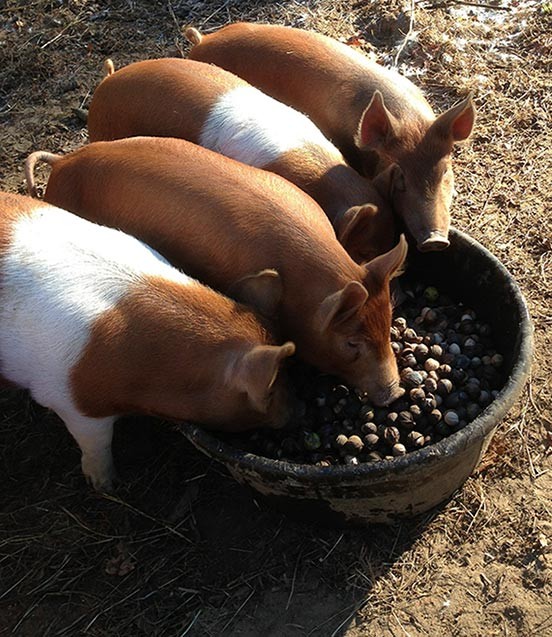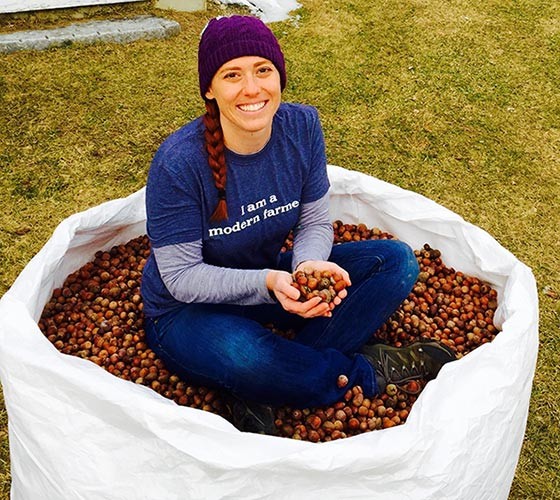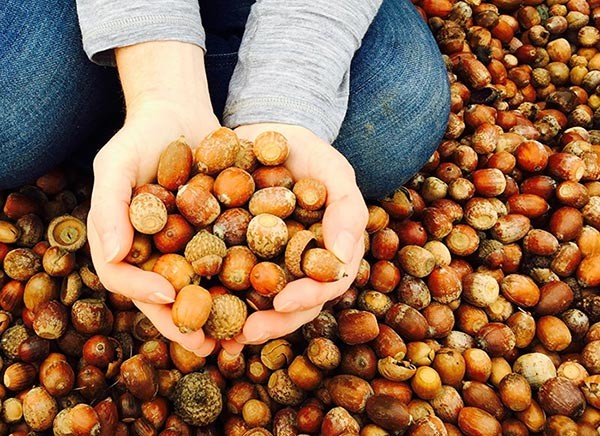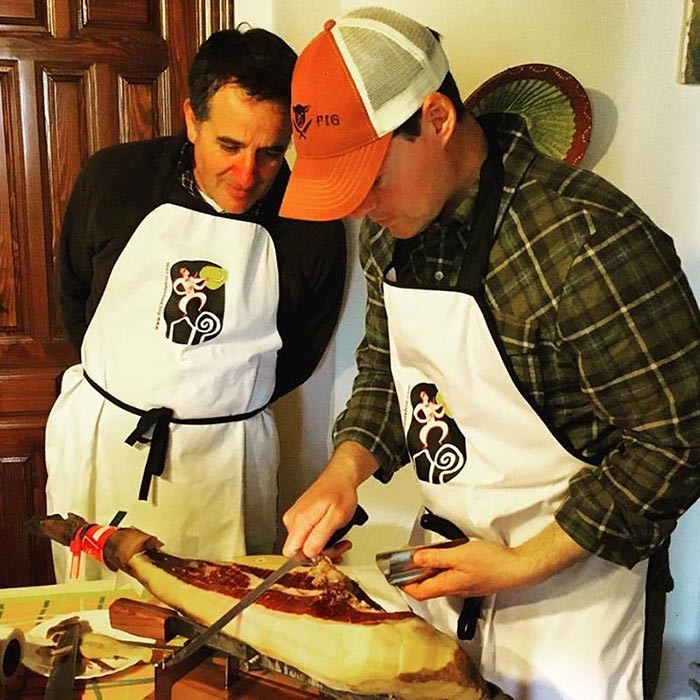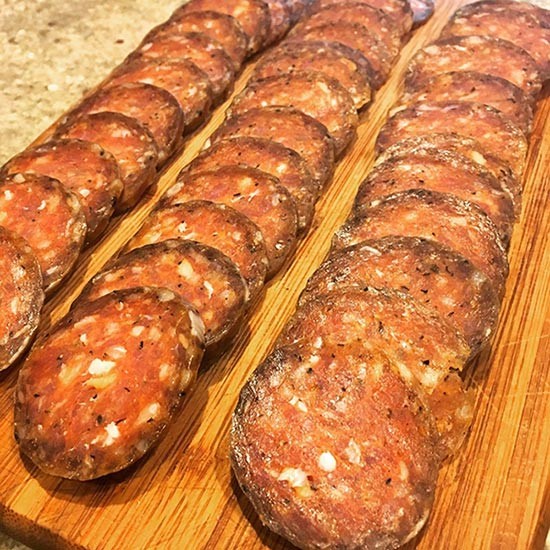In the summer of 2013, as part of her graduate work at the Yale School of Forestry and Environmental Studies, Jennifer Milikowsky was talking with small-scale landowners in northeastern Connecticut and thinking about their woodlots. Milikowsky was interested in the problems of forest conservation in the Northeast, where parcels typically are small and privately owned and where woodland owners are often land-rich but cash poor. How could forest conservation be ensured when land-control was so dispersed? What motivated landowners to hold onto their woodlots? What might make a stronger case for conservation than appealing just to the goodness of landowners’ hearts?
As a forestry student, Milikowsky knew that talking about timber value was usually part of the answer. It’s something that most woodlot owners understand but don’t always appreciate during the long stretches of time between harvests. But while conducting these interviews, Milikowsky noticed something interesting: many landowners derived much more gratification from selling maple syrup than they did from selling stumpage. “People had small sugarbushes, and they weren’t making that much money off the maple syrup, but they were so excited about the small amount of annual income,” she explained. More excited, even, than for the income from more lucrative timber sales every 10 or 15 years. Somehow, that small amount of annual income made holding onto the land seem worth it. This got Milikowsky thinking. If small economic incentives from sugaring could promote conservation, could harvesting other forest products have the same effect?
In considering other potentially profitable products, acorns seemed an obvious place to start. They had provided a staple food for Native Americans for thousands of years. They’re abundant, nutritious, and easy to identify. Maybe oak could be the next maple? Milikowsky began experimenting with acorn flour but quickly encountered a marketing dilemma. As delicious as acorn flour baked goods could be, hardly anyone knew how to make them. Acorn flour is nothing like wheat, so it’s not an easy substitute. Finding a market would mean educating consumers; it would mean building demand from the ground up.
The Finest Pork in the World
“Once I started thinking about acorns, it did not take long to get to pigs,” Milikowsky said on a tour of her farm in Westhampton, Massachusetts. She admits that she didn’t initially realize there was a connection. “The irony is that I’m Jewish. Clearly, I don’t keep kosher, and I’m not extremely religious. Nonetheless, I did not grow up eating a lot of pork.” But the acorn-pig connection will come as no surprise to connoisseurs. The finest (and most expensive) pork in the world is jamón ibérico de bellota, made from Iberian pigs finished on a diet of acorns.
What makes this acorn-fed Spanish pork so good? The acorn diet raises the proportion of oleic and omega-3 fatty acids in the pig fat. In addition to their health benefits, fats containing these acids have lower melting points. The fats of thinly sliced jamón will melt right onto the plate at room temperature. Cooking (or, even better, curing) the acorn-fed pork spreads the fats and their nutty flavor throughout the meat. Then, it quite literally melts in your mouth.
At first, Milikowsky resisted the idea of working with pigs. She’d worked on wildlife restoration projects in Hawaii and Florida, places where introduced pigs had devastated native ecosystems. Surely, it would not help the cause of conservation to pasture pigs in the woodlots of New England. Besides, the highly manipulated, rigorously managed landscapes – called dehesas – where jamón ibérico is raised were centuries in the making. It wouldn’t be feasible to recreate that system here.
But Milikowsky couldn’t quite let the idea go. What if there was a way to create a New England version of the Spanish model? What if there was a way of doing it without letting pigs run wild over New England hillsides? What if, instead of bringing pigs to the acorns, Milikowsky brought the acorns to the pigs?
The Business End of a Pig
It’s a long way from Spain to New England. The oaks are different species. The pigs are different breeds. Maybe the chemistry that leads to such tasty meat would be different, too. Maybe the pigs wouldn’t even eat New England acorns. In the fall of 2013, Milikowsky embarked on an experiment. She gathered acorns, found a farmer who was willing to work with her, and put a deposit on three pigs.
Pouring acorns into the trough for the first time was a moment of truth. “They got as excited as I’ve ever seen pigs,” she said. The pigs ate the acorns immediately. And they kept eating them. In the spring of 2014, Milikowsky was ready to take samples of her acorn-finished pork to high-end chefs in Connecticut and Boston. “They were raving about it. Some of them gave me such detailed feedback about how excited they were: the way the fat melted, the aromas coming off of it, the nuttiness, the way the nutty fat melted into the meat. This was really excited, articulate feedback.” Then they asked when they could buy more.
In addition to her pursuit of a graduate forestry degree, Milikowsky was also enrolled as an MBA student at the Yale School of Management; her first business plan was simple – she wanted to sell acorns to pig farmers. But as she began to learn about the business of raising pigs, she realized that staying simple would not be easy. Farmers weren’t quite ready to buy acorns. If you are a small-scale pig farmer in New England, you’re in a difficult business. The market is small. You’re probably not selling to a distributor, so you have to be a salesperson as well as a farmer. If you’re lucky, there are farmers’ markets nearby where you can find some customers. You hope that nobody else shows up selling a similar product. Restaurants would be great customers, except that most of them need a more consistent supply than you can provide. It’s a high-risk venture. Most farmers increase the size of their herd only when they have a guaranteed buyer at the other end. It’s not a type of business that encourages farmers to take risks on wild, new ideas.
Milikowsky realized that if she wanted to sell acorns, she was going to have to play matchmaker between farmers and chefs. Her agroforestry dream changed into a more complex, three-part food business. Her plan was, first, to find restaurants and markets that wanted to buy acorn-finished pork; second, to create a network of partner-farmers willing to feed acorns to some of their pigs; and finally, to supply those farmers with the acorns.
It seemed like a win-win-win. With a wide network of farmers, restaurants could depend on having acorn-finished pork when they needed it. Farmers would have guaranteed buyers and – even better – they wouldn’t have to be salespeople. They could focus on being farmers. And those farmers would no longer compete with each other. Instead, they could compete collectively with the bigger wholesale distributors because they would have something unusual to offer. This wouldn’t just be local pork. This would be acorn-finished local pork – pork that chefs and foodies clearly want.
After spending the fall of 2014 gathering acorns, Milikowsky and Tylan Calcagni (her partner in both business and life) formally launched their business, Walden Hill, in December of that year. Milikowsky graduated the next spring. Finally, the whole idea was coming back to where it started – the trees. By the end of 2015, Milikowsky estimated, they had gathered nearly 100,000 pounds of acorns.
Gathering Nuts
Acorns are everywhere – finding them isn’t a problem. But gathering 100,000 pounds of them is a lot of work. Milikowsky and Calcagni gathered the majority of the acorns themselves. (Indeed, they seem unable to stop. As I walked through the forest during our interview, they kept stooping to fill their pockets.) They placed ads to let people know that they’d buy acorns. (Full disclosure: one of those ads was posted in Northern Woodlands.) They offered to gather acorns from landowners who didn’t want them, or to buy acorns from landowners that gathered themselves. They also partnered with ublic parks and college campuses, which often need acorns removed for safety and liability reasons.
For many suburban homeowners, cleaning the acorns out of their yards is an annual chore. Some seemed surprised that there was a market for their acorns. When Milikowsky visited one acorn-seller who had heard about the enterprise, he quipped, “Acorn Girl exists! We thought you were a myth.” Another man invented ingenious acorn-gathering devices to gather thousands of pounds of them.
Here was a glint of the same enthusiasm and pride with which woodlot owners talked about maple sugaring. And there were hints that acorn-finished pigs were already having a positive impact on the conservation of native oaks. “I probably would have cut down those trees,” one landowner told Milikowsky, “if you hadn’t come along.”
The Future
Today, Milikowsky and Calcagni’s woodlot is an odd sight. Large oak trees spread their boughs over an open, grassy forest floor. Beneath them, pinned to the ground by stakes, are nets of the kind used in shellfish farming. Here, they are acorn-catchers.
Calcagni told me some of the flaws in what seemed to be a supremely clever idea. The acorns are too heavy. The nets tear. They can’t gather from them as efficiently as they’d like. He tells me about improvements that he’s considering. It strikes me that his attitude about nets is a microcosm for the whole project – idealism and ingenuity in equal measure.
At the time of this writing, Walden Hill is feeding acorns to more than 100 pigs and selling pork to restaurants and markets in Connecticut, Massachusetts, and Vermont. I asked if they ever felt overwhelmed by the scale of their project, and without missing a beat, Calcagni responded, “Every day.” There are still obstacles to making their dream a reality. “Maybe we’re crazy,” Milikowsky told me. “There is no typical day for us. We go from, ‘This can’t work,’ to ‘Look how much we’ve figured out. Look at how much we’ve done.’” Overall, Milikowsky is optimistic. “I’m pretty stubborn,” she said, “This system needs to be there. The net trajectory is upward. And that’s what keeps us going.”
Just as the forests of New England are held by a patchwork of owners, it may take a patchwork of approaches to conserve them. Selling bags of acorns will never be as lucrative for landowners as selling timber. But if Millikowsky is correct, it may not need to be. As with maple syrup, a small, regular source of income from acorns may add one more incentive for Northeastern landowners to continue their long tradition of stewardship for their land.


